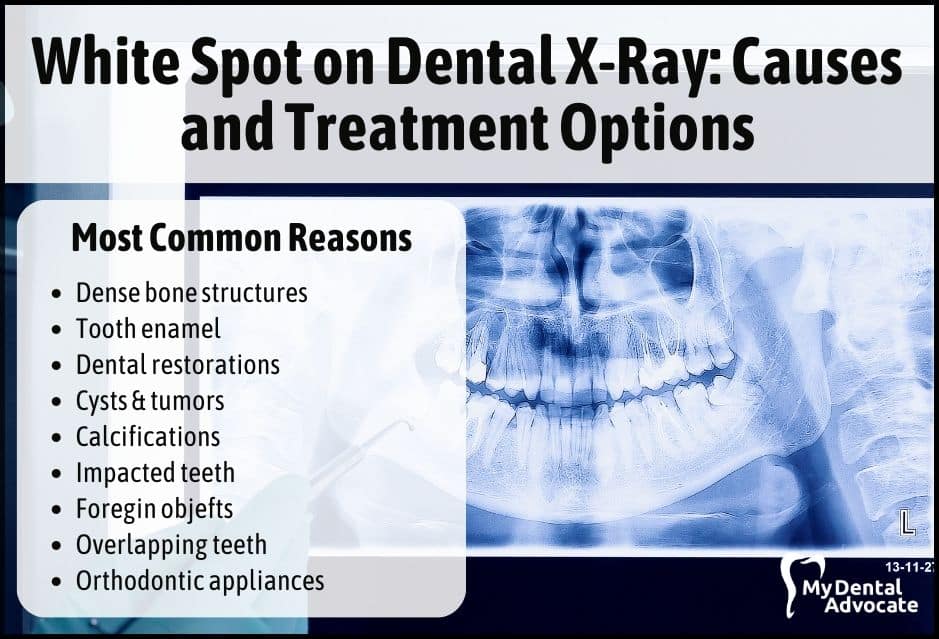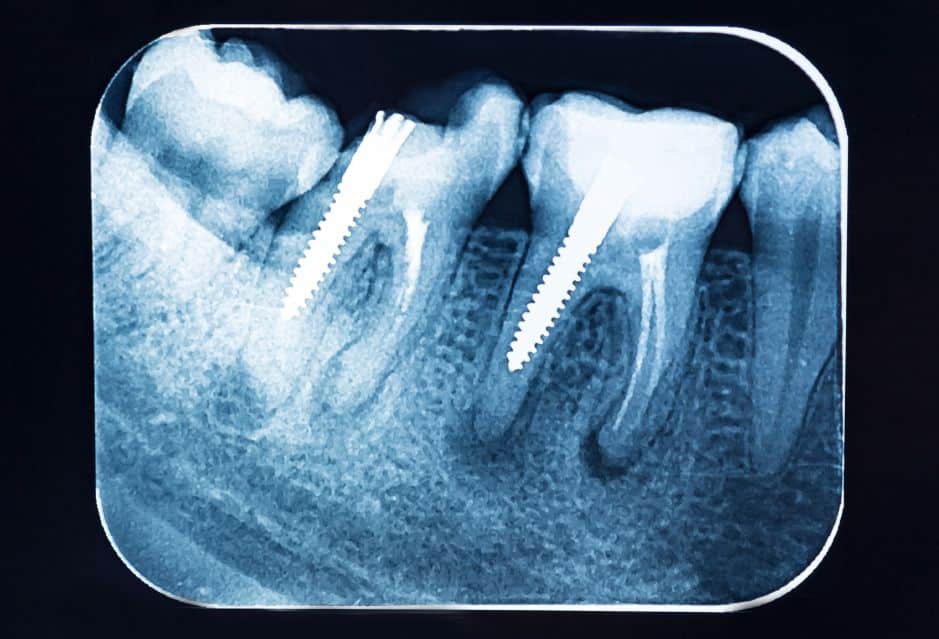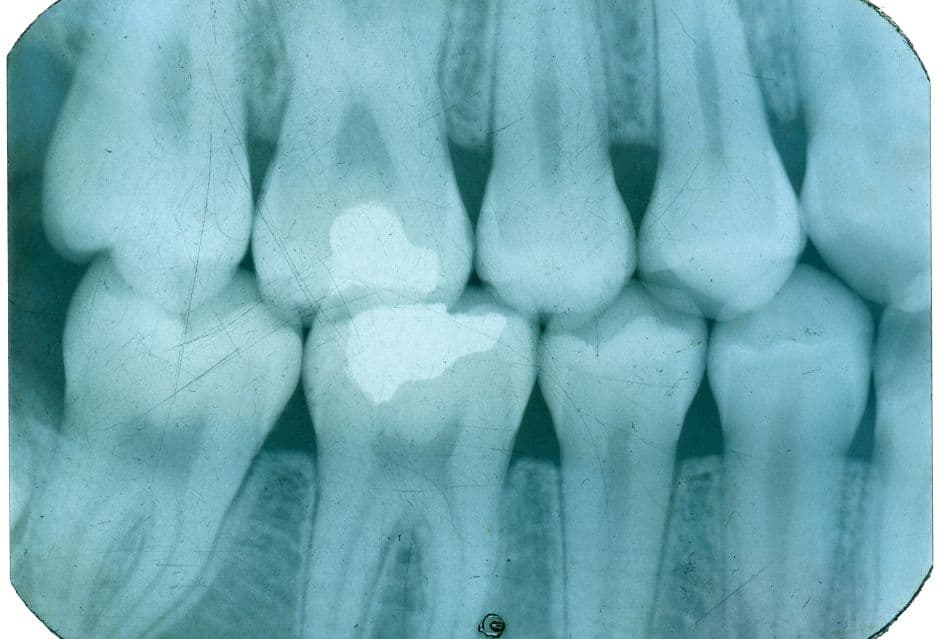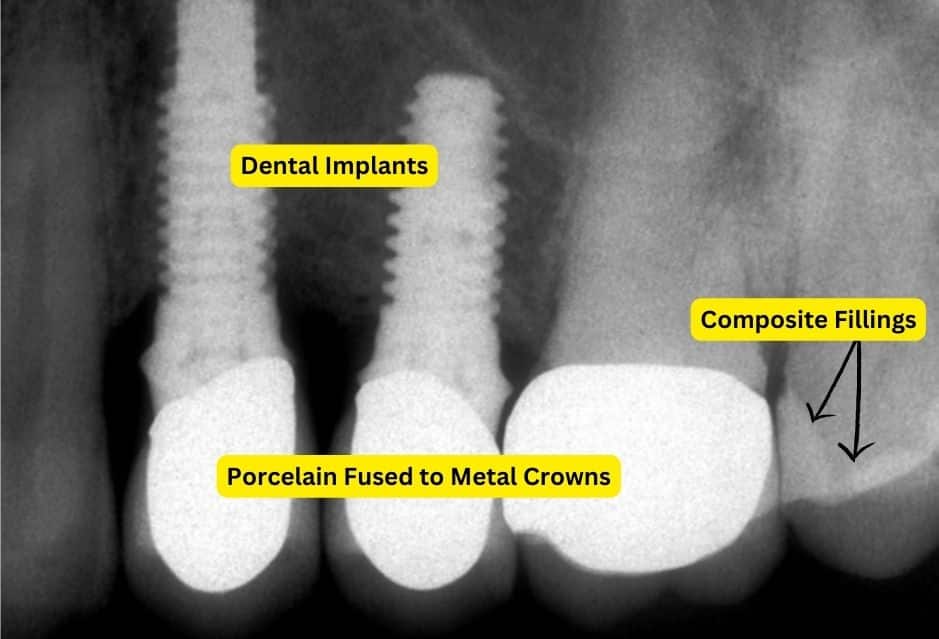White Spot on Dental X-Ray (Best Advice)

If you’ve recently had a dental x-ray, you might have noticed a white spot on the image.
While this can be concerning, it’s important to understand what these spots mean and how they can impact your oral health.
This article explores the causes of white spots on dental X-rays, how they’re diagnosed and interpreted, and what treatment options are available.
Key Takeaways
- White spots on dental X-rays can be caused by various factors, including tooth enamel, fillings, dental restorations, cortical bone and cysts.
- Diagnosis and interpretation of white spots on dental X-rays can be complex and require a thorough evaluation by your dentist.
- Treatment options for white spots may include monitoring, removal of affected tooth structure, or root canal therapy.
Need Dental Advice? Ask Dr. Hannan!
About Dental X-Rays

Dental X-rays, or radiographs, are essential for dentists to examine your teeth and diagnose any potential oral health issues.
These X-rays use a small amount of radiation to capture images of your teeth, jawbone, and surrounding tissues.
Your dentist may recommend a dental X-ray if they suspect tooth decay, gum disease, or other oral health problems.
The images produced by X-rays can help your dentist identify issues that may not be visible during a regular oral exam.
During a dental X-ray, you will be asked to wear a lead apron to protect the rest of your body from radiation exposure.
The X-ray machine will be positioned next to your face, and you will be asked to bite down on a small piece of plastic to hold the film in place.
Recommended Reading: Do Dental X-rays Show Cancer? (Expert Advice)The process only takes a few minutes, and you will not feel any pain.
After the X-ray, your dentist will examine the images to look for abnormalities. These may include cavities, impacted teeth, or bone loss. By identifying these issues early, your dentist can recommend appropriate treatments to prevent further damage to your oral health.
It’s important to note that dental X-rays are generally safe and do not pose a significant risk of radiation exposure. Your dentist will only recommend an X-ray if necessary for your oral health.
If you have any concerns about dental X-rays, discuss them with your dentist.
White Spots on Dental X-Rays
White spots on a dental X-ray indicate areas where the X-ray beam cannot easily penetrate due to the density of the material.
Here’s a comprehensive list of what might cause white spots to appear on a dental X-ray.
Highlights
- Dense Bone Structures: Healthy, dense bone blocks X-rays, showing up as white on the image.
- Tooth Enamel: Being the hardest and most mineralized body part, enamel also appears white on X-rays.
- Dental Restorations: These are often denser than natural teeth and show up white. This includes:
- Amalgam Fillings: Traditional and dense, they appear bright white.
- Metal Restorations: Gold crowns or bridges are white on X-rays.
- Composite Restorations: Some composites may show as white spots, depending on their composition.
- Cysts and Tumors: Dense growths like cysts or tumors can appear white.
- Calcifications: These can form in the pulp chamber or soft tissues, showing up as white.
- Impacted Teeth: Un-erupted teeth embedded in the jawbone are seen as white spots.
- Foreign Objects: Things like metal fragments or broken dental tools in the mouth can appear white.
- Overlapping Teeth: When teeth overlap on an X-ray, their combined density might look white.
- Orthodontic Appliances: Braces and wires, made from dense materials, are white on X-rays.
- Porcelain or Ceramic Restorations: High-density porcelain or ceramic crowns or bridges may also show as white spots.
Sometimes, white spots on dental X-rays may be benign and not require treatment. However, they can provide critical insights into your oral health in other instances.
If your dentist notices white spots on your X-rays, they will work with you to understand what they signify and, if needed, develop an appropriate treatment plan.
Diagnosis & Interpretation
When dental professionals notice white spots on dental X-rays, a systematic approach is taken to identify and interpret them.

How Dental Professionals Identify White Spots
The identification of white spots in dental X-rays requires careful examination.
Dental professionals begin with a visual assessment of the X-rays, analyzing various attributes such as location, shape, and size.
If available, past X-rays are compared to observe any changes or developments over time.
The Role of Dental X-Rays in Diagnosis
Dental X-rays are paramount in the diagnosis process, serving multiple essential functions.
Highlights
- Seeing beneath the surface of the teeth and gums
- Detecting hidden dental structures or abnormalities
- Monitoring and tracking changes over time
This diagnostic tool is often the first step, providing a clear picture of underlying dental conditions and guiding further examination.
Other Diagnostic Tools & Techniques
While dental X-rays play a vital role, other diagnostic tools and techniques might be used to complement the findings.
Clinical examination of the teeth and gums, additional imaging like CT scans or MRIs, and laboratory tests may all be part of the process, particularly when complex issues like cysts or tumors are suspected.
By combining the insights gained from dental X-rays with other diagnostic methods, dental professionals can form an accurate understanding of the white spots.
This comprehensive approach ensures that the patient receives a precise diagnosis and the most effective treatment plan tailored to their needs.
Recommended Reading: Transforming Dental Health: The Breakthrough of Digital Dental X-raysTreatment Options

White spots on dental X-rays can signify various underlying conditions, each with its unique treatment approach.
Here are some of the general treatment options that might be considered:
Monitoring
Sometimes, the appearance of white spots may not necessitate immediate intervention. Instead, a dentist might opt for careful monitoring.
Regular follow-up x-rays and examinations can ensure that any changes are promptly addressed.
Tooth Removal
Tooth removal may be the most suitable option in more severe cases where the white spots indicate serious underlying problems such as deep decay or cysts. Extraction is usually considered as a last resort when other treatments might not be feasible or effective.
Root Canal
A root canal might be recommended if white spots are linked to tooth pulp issues. This procedure involves removing infected or damaged pulp tissue and sealing the tooth, preserving its structure and appearance.
Recommended Reading: FMX Dental X-ray Guide (Are They Safe?)Collaboration with a Dental Specialist for Tailored Care
The above options are general approaches, and the specific treatment for white spots on a dental X-ray must be tailored to the individual’s unique situation.
Close collaboration with a dental specialist, such as an oral surgeon, is vital to determine the cause of the white spots and develop an appropriate treatment plan.
Treatment Plan
- Detailed examination and consultation
- Additional diagnostic tests, such as further X-rays or scans
- Consideration of the patient’s overall dental health, medical history, and preferences
My Experience & Expertise
As a dentist, white spots on dental X-rays can be complex, requiring professional evaluation and tailored treatment.
Whether through monitoring, tooth removal, root canal, or a combination, working closely with a dentist ensures that the care aligns with the underlying cause and the patient’s overall well-being.
Regular dental check-ups and communication with dental professionals are key to effective management and optimal oral health.
Need a second opinion? We can help! Learn more. Knowledge is power when cultivating healthy dental habits. The more informed you are, the better positioned you’ll be to prevent avoidable and potentially costly dental procedures for you and your family. Watch for future blog posts, where we’ll continue sharing important information, product reviews and practical advice!

About the Author
Dr. Matthew Hannan, also known as “Dr. Advocate,” is a board-certified dentist on a mission to provide accurate dental patient education. He attended Baylor University before completing dental school at UT Health San Antonio School of Dentistry. He now lives in Arizona with his beautiful wife and 4 kids. Dr. Hannan believes everyone should access easy-to-read dental resources with relevant, up-to-date dental research and insight to improve their oral health.

Connect with Dr. Hannan!

5 Best Electric Toothbrush for Gingivitis 2024 (Dentist-Recommended)
Ever wake up with swollen, tender gums, wincing as you brush your teeth in the morning? If so, you might be one of the millions of people battling gingivitis, a common gum disease that can be painful and, left untreated, can lead to more serious oral health issues.

Best Mouthwash for Sore Throat 2024
Dealing with a sore throat can be quite discomforting, not just because it makes swallowing a Herculean task, but also because it can significantly impact your daily life. Whether it’s singing your favorite song, savoring a delicious meal, or simply engaging in a friendly chat, a sore throat can be a real party pooper.

Types of Dentists (DDS, DMD & Dental Specialists)
Did you know that the majority of dental professionals are general dentists? Of course, many would say yes! However, did you know that there are 12 different dental specialties?
Gain Clarity with Our FREE Second Opinion Guide
Receive clear, expert second opinions online within 48 hours. Start today!
Product Reviews
Our 250+ dental product reviews (and counting), curated by an experienced dentist, are the most comprehensive online.
Toothbrush Genie
State-of-the-art chatbot designed to help you discover your perfect toothbrush in just a few simple steps!
Cavity Risk Assessment
Cutting-edge digital tool designed to evaluate your individual cavity risk based on your responses to a series of questions.
Gum Disease Assessment
Discover your gum disease risk with our quick and engaging 6-question assessment!


